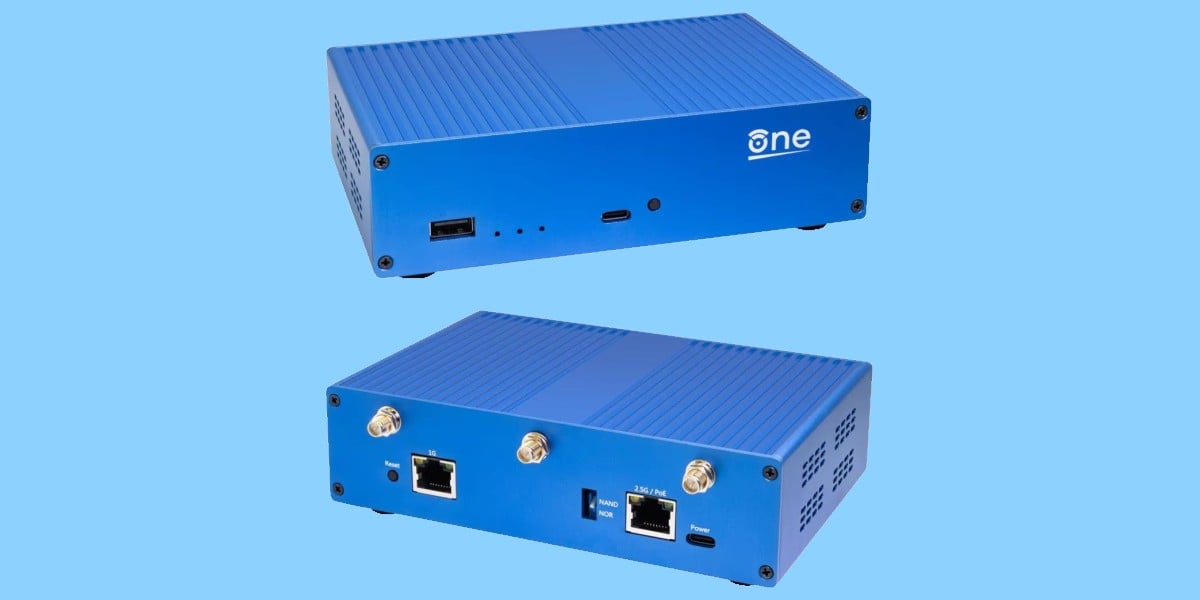deleted by creator
This is link to CZ.NIC’s Turris offerings.
They ship to “many countries” besides Czech republic, according to their page.
The router itself is quite expensive at around 400 euros for the wifi model.
In case it is not obvious, they are primarily Czech domain registrar.
Just pulled the trigger, only had European plugs in stock. I’ve got adapters so np. I’m getting it to replace my Raspberry Pi router that I’ve been using for a few years.
*Edit, I should say I’m a huge fan openWRT despite the fact that 15 years ago I managed to brick my linksys router so bad it actually caused sparks to shoot out the ethernet jacks. I flashed the wrong model firmware.
I’m glad it’s open hardware as much as open software, but I think I’ll wait to see what the OpenWrt Two looks like.
Of course, I just bought a new router, your all welcome
Thank you for your sacrifice.
Which router did you go for, by the way?
There are use cases for this router, but please don’t get the plastic clone sold by the same Chinese company that assembles the real thing. (The plastic clone costs a third, but doesn’t have detachable antennas and doesn’t accept mainstream OpenWRT because it uses an almost unknown CPU.)
Myself, when I need a high capability router (for me “capability” typically means “range”) I turn towards a Raspberry Pi and Alfa AWUS1900 wireless card. Yes, it lacks in throughput (USB is a severe bottleneck)… but with a bit of tweaking, you can talk out to 2 kilometers if terrain allows. :)
The next router I’m getting!
I just ordered the GL-MT6000. Wondering if I should cancel and get this instead.
This is cool
What’s the point of having 1G on WAN and 2.5G on LAN? Traffic won’t hit the LAN port until it’s routed to the Internet, yet the WAN port is the bottleneck.
Edit: Seems like I switch up the port speed but my point still holds as the bittleneck still exist.
The LAN and WAN ports aren’t labelled as such on the device and can be configured to do anything. The 2.5Gb port can also be used to take in PoE so for a lot of people - myself included - this will be the only port that’s actually used, or at least the port that will be used the heaviest. The reason, I think, that it’s configured as WAN by default is so that the LAN port can be used to plug a laptop in directly without disconnecting the whole network.
This person knows openwrt haha.
It doesn’t matter. Port configuration can switch around and the bottleneck is still there. Traffic with in the broadcast domain (i.e. subnet) will handled by the switch alone.
There is WiFi onboard so it can have some actual benefits, depending on design and how user access resources, but how likely you’re going to saturate that 1/2.5G link? Not even you stream some 4K movies from Plex to iPhone will does that.
I think you might have missed the point: with a managed switch that 2.5Gb port can be used to handle multiple WAN and LAN connections simultaenously. My home network includes two WANs and six LANs split purely by VLAN tagging and that 2.5Gb connection should handle all of them just fine.
Which I do specified “in the broadcast domain”. Sure you can use it with VLAN but that more than the scenario I’m describing.
Tranfering between devices on the LAN.
Edit: Wait, no, it’s the other way around. 2.5 on WAN, and just a single 1GB LAN port. That absolutely doesn’t make sense.
Maybe it can be used as a router on a stick.
That’s the only use I can think of but I don’t know if OpenWRT support VLAN cuz I never used it directly.
Does it have enough power to handle routing (not just switching) 2.5Gb + 2.5Gb + whatever the WiFi can support? My guess is it cannot and it would have pushed the price up signifcantly to do so.
Does seem counter intuitive to me as this is squarely aimed at enthusiasts who would like to min max their home network.
It’s default 2.5G WAN and 1G LAN. It also has wifi to use some of that bandwidth.
Could it help with internal tasks, like self-hosted services or a business that transfers files around a lot?
If only it were a useful hardware configuration.
I need this router.
So, how is this any better than the Router Mini PCs you can find in Aliexpress (random example)?
Most of those run OpenWrt or PfSense. Assuming the hardware is well-supported by the open source software it runs, there’s a argument to be made that there’s no difference. There’s always the risk of them using some weird chipset that won’t be supported in a year’s time. The only difference is that the OpenWrt One is specifically designed for OpenWrt with well-supported hardware.
how good is openwrt these days? i used it a long time ago on tp link hardware are remember it was not too good…like adding own scripts, addons etc. and then i tried stuff like ipfire,ipcop and pfsense. pfsense was so much better and now opensense is quite good. how does current openwrt compare?
OPNsense is like comparing a bicycle to a car (in Europe) Both will get you there,the first one is more convenient most of the time for most users,but the second one is a whole class of “more powerful”. But it’s far easier to take a shortcut with a bike.
k. thanks. i really was thinking they made hughe progress now that they do dedicated hardware.
I’ve been using it on my last 2 routers, currently the Netgear WAX206 and I’m loving it.
It does what it’s supposed to. No complaints.
It’s Open source hardware too
Whilst that’s a nice slogan, in Electronics “open source” doesn’t mean anywhere as much as it does in Software because it’s generally just knowing which components go into the circuit, which is but a fraction of the work (laying out the board is a massive chunk of work, in some cases most of it, and at high enough clock speeds circuit design is an art in itself).
Mind you, I like the Orange Pi and Banana Pi guys, and the idea of an SBC designed for being an open source router is pretty appealing, though nowadays maybe pfSense would be a better choice than OpenWrt.
Finally this thing having only 2 ethernet ports + WiFi makes it little more than a regular $70+ SBC board + a box - something easy enough to put together by any technically inclined person - which isn’t exactly exciting.
WiFi
The very example I provided comes with an mPCI-e slot to install a WiFi card of your choosing.
Also they have SIM card slots so you can install a data SIM card and set-up a fallback configuration that switches to it if your landline internet connection goes down.
Of course. But this one comes with WiFi onboard and a case with antennas if you go for the clothed option.
Yeah, the case with antennas is a good point - when I decided to concentrate various things in a Mini-PC in my living room (TV-Box, Router and so on) I actually looked into these router Mini-PCs as an option and the biggest problem was the lack of a proper antenna, so I ended up going with a generic Mini-PC and leaving out the router functionality which remains done by my old router (which is quite decent, just a bit outdated).
Mind you, this one also wouldn’t work for me because I’m using 4 Ethernet ports (1 for the external connection and 3 internally) whilst this one only has 2 (a weird choice for a router).
IMHO, this isn’t really better than just getting an SBC with 2 Ethernet ports and WiFi and put it in a box with an antenna), a setup which suffers from exactly the same problem as this one: not enough Ethernet ports.
Well it’s cheaper, so I’m not sure it’s going for “better”.
I love the specs and the pricing. Will definitely check it out.
Mmh only two Ethernet ports? I guess it’s for people who use mostly wifi only?
It’s just the router, I guess. Provide your own switch for more ports.
Exactly this. With VLAN tagging you can plug that single 2.5Gb connection into a 48-port managed switch and effectively have up to 47 different NICs if that’s what floats your boat. They’d all share the 2.5Gb but that’s still more than a lot of small networks need.
In a shared 2.5Gb scenario as you describe, would fully pegged upload/download be 1.25Gb each? Could it do 2.5Gb in both directions simultaneously? Assuming no compute bottlenecks.
It’s full duplex so it’s 2.5Gb each way simultaneosly. Most NICs support half-duplex but I don’t know of any good reason to use that. I used to have a BananaPi based router that could comfortably saturate it’s gigiabit interface. I assume there’s some kind of offloading going on.
It’s a router, not a switch.
Well the router I use today has 4 ports (and a built in modem for that matter, but I don’t use that).
I understand I can use a switch, but that means I’ll have to buy a switch in addition to this to replace my router.Which is not a bad thing, it’s more unix if you will. Router is a router, switch is a switch.
You provide your own switch and you choose the features: port count, port speed, vlan, etc — or get a 10€ switch if you don’t care. When a port breaks you replace the switch alone.
Multifunction tools are generally a tradeoff where you buy immediate convenience and pay with more ewaste and more money in the long run.
Good point.
I also wanted to chime in with the perennial point that while this device is a pure expression of the OpenWrt project, they also support hundreds of other devices including, amazingly, a number of large switches, so if you wanted to ditch the separate route appliance altogether you could get all the features with only switch hardware.
I need this but 4G version…
GL.inet has some LTE routers with OpenWRT on them. I haven’t tried the LTE version, and the one (Shadow) I have has to be rebooted once a week, but that’s a really cheap one I was trying.
I’m late to the party but please consider this FOSS / liberated hardware option from thinkpenguin. Highly recommended.
Powered by usb-c, runs on librecmc
https://www.thinkpenguin.com/gnu-linux/free-software-gigabit-mini-vpn-router-tpe-r1400













